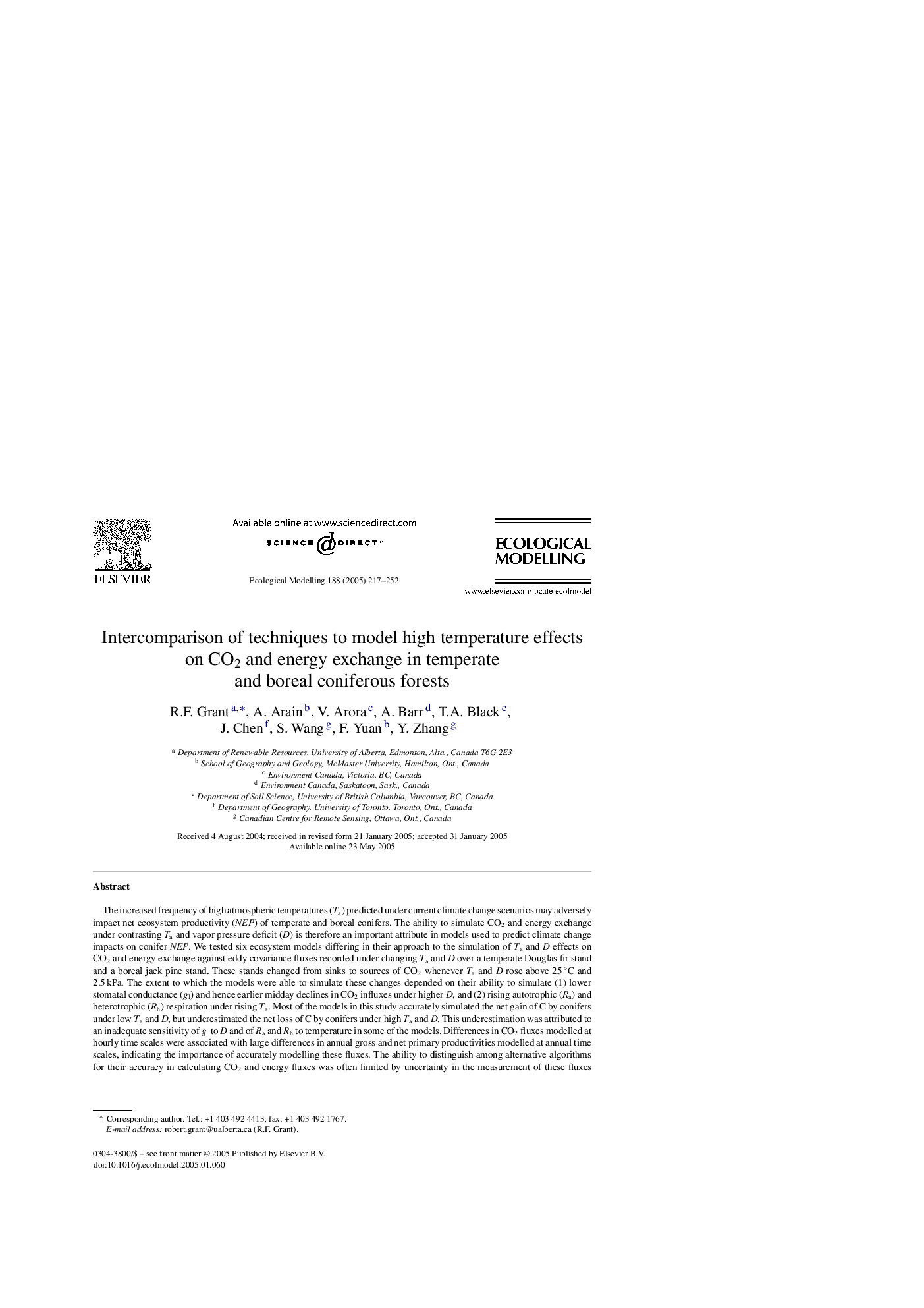| Article ID | Journal | Published Year | Pages | File Type |
|---|---|---|---|---|
| 9443516 | Ecological Modelling | 2005 | 36 Pages |
Abstract
The increased frequency of high atmospheric temperatures (Ta) predicted under current climate change scenarios may adversely impact net ecosystem productivity (NEP) of temperate and boreal conifers. The ability to simulate CO2 and energy exchange under contrasting Ta and vapor pressure deficit (D) is therefore an important attribute in models used to predict climate change impacts on conifer NEP. We tested six ecosystem models differing in their approach to the simulation of Ta and D effects on CO2 and energy exchange against eddy covariance fluxes recorded under changing Ta and D over a temperate Douglas fir stand and a boreal jack pine stand. These stands changed from sinks to sources of CO2 whenever Ta and D rose above 25 °C and 2.5 kPa. The extent to which the models were able to simulate these changes depended on their ability to simulate (1) lower stomatal conductance (gl) and hence earlier midday declines in CO2 influxes under higher D, and (2) rising autotrophic (Ra) and heterotrophic (Rh) respiration under rising Ta. Most of the models in this study accurately simulated the net gain of C by conifers under low Ta and D, but underestimated the net loss of C by conifers under high Ta and D. This underestimation was attributed to an inadequate sensitivity of gl to D and of Ra and Rh to temperature in some of the models. Differences in CO2 fluxes modelled at hourly time scales were associated with large differences in annual gross and net primary productivities modelled at annual time scales, indicating the importance of accurately modelling these fluxes. The ability to distinguish among alternative algorithms for their accuracy in calculating CO2 and energy fluxes was often limited by uncertainty in the measurement of these fluxes using eddy covariance, especially when low wind speeds and stable boundary layers reduced atmospheric turbulence. Further progress in model testing will require that this uncertainty be more clearly established and reduced.
Keywords
Related Topics
Life Sciences
Agricultural and Biological Sciences
Ecology, Evolution, Behavior and Systematics
Authors
R.F. Grant, A. Arain, V. Arora, A. Barr, T.A. Black, J. Chen, S. Wang, F. Yuan, Y. Zhang,
